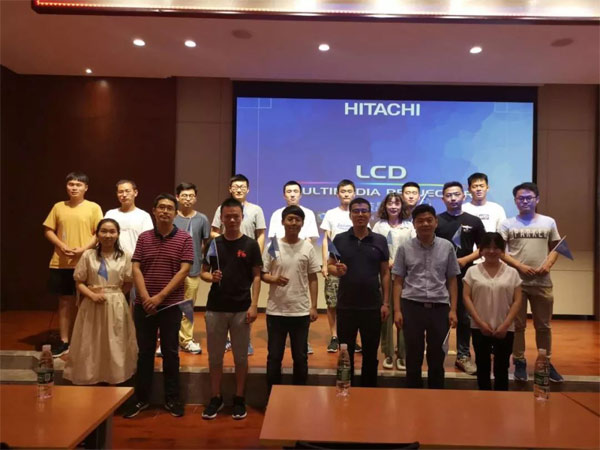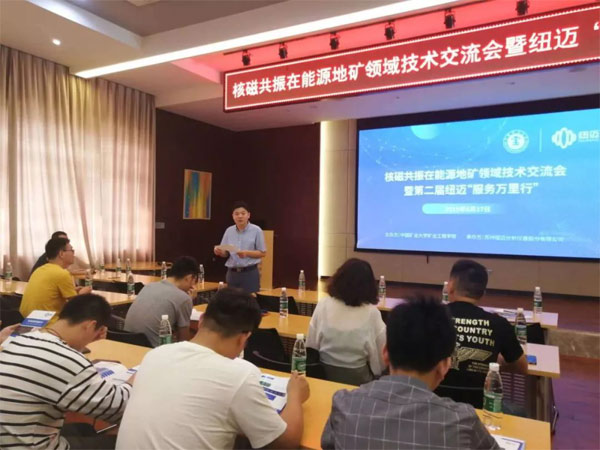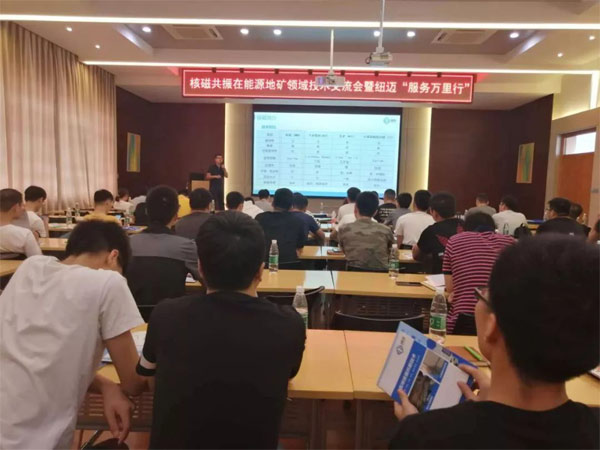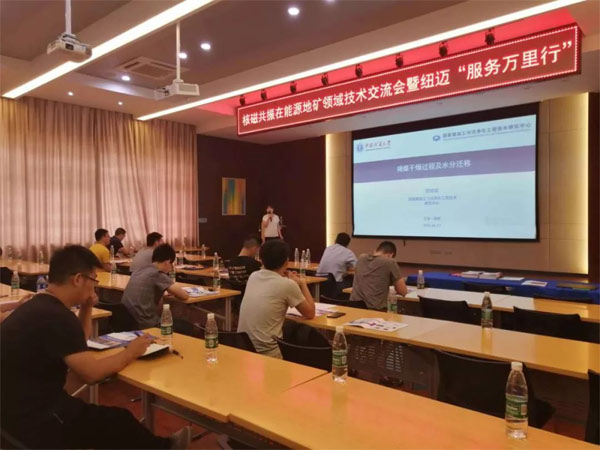Serve customers with heart and deepen school-enterprise cooperation. On June 17th, 2019, it was at the end of the summer season when the lotus leaves were infinitely beautiful. The magnetic resonance in the field of energy and minerals and the second session of the Niumag analysis of the Miles at the China University of Mining and Technology The conference room of the School of Mining and Engineering was held. The school was from the Institute of Mining and Engineering, and the teacher of the School of Safety Science and Engineering, Dr. Sun Yong, and more than 50 teachers, doctors and graduate students, who were not afraid of the heat, came to participate in this exchange.
For the first time, this event adopted an innovative model of two-way communication. Not only did Niumag’s R&D manager bring in the application of low-field NMR technology, we also invited Dr. He Qiongqiong, a teacher from the School of Chemical Engineering, and Dr. Sun Yong from the School of Safety Science and Engineering to share on behalf of their respective teams. Research results based on nuclear magnetic resonance technology.

- Two-way communication

At the beginning of the event, Mr. Kan Jiaguang, on behalf of the School of Mining and Engineering of China University of Mining and Technology, welcomed all the teachers and students to participate in the exchange meeting, and encouraged all of them to actively discuss and discuss the issues in scientific research.

Dr. Wu Fei, the research and development manager of Niumag, made a technical report. The report covers the application principles, new technology introduction, application cases, and customer published articles in the field of nuclear magnetic resonance energy. Many students’ feedback reports are very in-depth, and the application principle is part. Solve the doubts that know why they don’t know why, new technologies and application cases broaden everyone’s scientific research ideas, and provide an innovative development direction for the future topics.

Dr. He Qiongqiong, a teacher from the School of Chemical Engineering, shared the report entitled “Lignite Drying Process and Water Migration” and compared several different pore testing methods such as CO2, N2 adsorption method, mercury intrusion method and nuclear magnetic resonance method in the report. The biggest advantage of the low field NMR Analyzer method is twofold: First, it is non-destructive, and non-destructive not only ensures multiple lateral experiments of the same sample, but also does not destroy the pores, thus ensuring accurate results. Second, the test range is wide, from a few nm to several thousand nm, and the applicability to different samples is very strong.
Dr. He talked about the boring and boring scientific research, and he shared his research experience during his doctoral period. He encouraged everyone to have a scientific research attitude that dares to question, be brave in practice, and seek truth and pragmatism.
 NIUMAG
NIUMAG